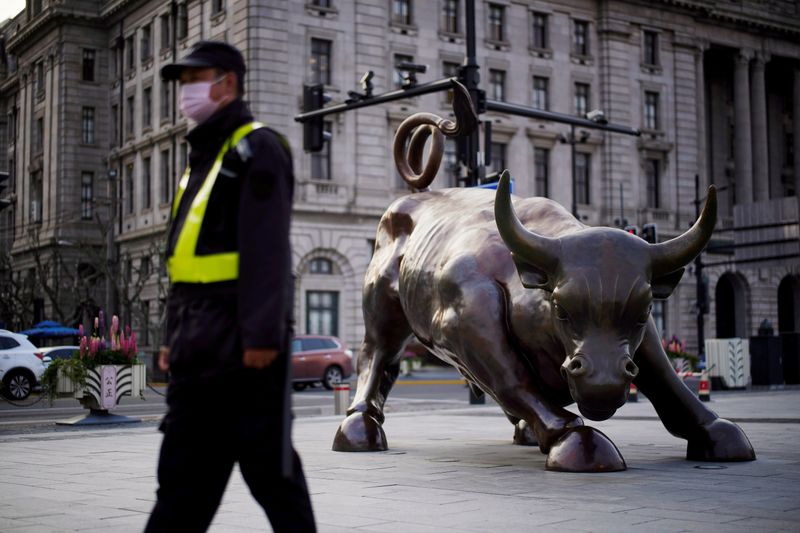This post was originally published on this site

(Reuters) – Asian shares wobbled in a choppy session on Friday as abysmal economic data from the United States and rising global COVID-19 cases weighed on sentiment, despite strong U.S. tech earnings and signs of manufacturing recovery in China and Japan.
The U.S. dollar was also set for its worst month in a decade amid expectations the Fed will maintain its ultra-loose monetary policy for years.
U.S. GDP collapsed at a 32.9% annualized rate in the second quarter, the deepest decline on record, while jobless claims rose last week, adding to signs the momentum of economic recovery has slowed.
Those figures overshadowed positive manufacturing data from China and Japan. China’s official Purchasing Manager’s Index (PMI) data showed that factory activity grew in July for a fifth straight month and at a faster pace, defying expectations of a slowdown, while Japan’s industrial output snapped four months of declines in June.
“We are seeing some tentative signs of an improvement in global trade flows as economies reopen, but the overhang from recessionary conditions in the developed world and rising infection rates are kind of a focus for investors at the moment,” said Ryan Felsman, senior economist at CommSec in Sydney.
After rising in early trade, MSCI’s broadest index of Asian shares outside Japan (MIAPJ0000PUS) turned lower by late morning. It was last down 0.22%.
Australian shares (AXJO) slid 1.85% amid month-end profit taking and Seoul’s Kospi (KS11) ticked down 0.2%. Japan’s Nikkei (N225) dropped 1.87% as a stronger yen weighed on exporters.
Chinese blue-chips (CSI300) were last down 0.29% in a choppy session.
But futures resolutely pointed to a positive open on Wall Street on Friday after Apple (O:AAPL), Amazon (O:AMZN), Facebook (O:FB) and Alphabet (O:GOOGL) reported quarterly earnings on the same day for the first time ever, all topping Wall Street estimates.
“All of them punched the lights out with respect to their earnings numbers,” said National Australia Bank (OTC:NABZY) strategist Ray Attrill. “It looks like it should be a pretty risk positive run into the weekend.”
E-mini futures for the S&P 500 (ESc1) rose 0.38%.
Deemed “stay-at-home” winners as millions of Americans were ordered indoors to contain the COVID-19 pandemic, shares of the largest U.S. technology companies have hit record highs in recent months as the coronavirus pandemic has thrown the economy into its steepest contraction since the Great Depression.
U.S. stock markets, oil prices and the dollar slid on Thursday as the new data underscored the deep economic impact of the coronavirus and U.S. President Donald Trump raised the possibility of delaying the November election.
On Wall Street, the Dow Jones Industrial Average (DJI) fell 225.92 points, or 0.85%, to 26,313.65, the S&P 500 (SPX) lost 12.22 points, or 0.38%, to 3,246.22 and the Nasdaq Composite (IXIC) added 44.87 points, or 0.43%, to 10,587.81.
In the currency market, the dollar slumped 0.39% against the yen to 104.31 , while the euro jumped 0.4% to buy $1.1889.
The greenback remains on course for its worst month in a decade, with the dollar index (=USD) dropping 0.12% to 92.679.
Crude oil recovered from an overnight slump, with global benchmark Brent crude (LCOc1) rising 0.54% to 43.17 a barrel. U.S. crude added 0.3% to $40.04 per barrel.
Gold also turned higher, with spot gold trading 0.48% higher at $1,968.84 per ounce, just short of record highs.
U.S. benchmark 10-year Treasury notes (US10YT=RR) yielded 0.525%, down from a U.S. close of 0.541% on Thursday. The two-year yield (US2YT=RR) touched 0.1133% compared with a U.S. close of 0.121%.



